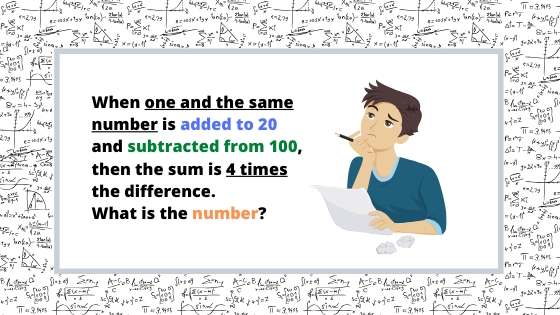An equation is a statement that the two mathematical expressions are equal.
An equation always has an equal sign.
To solve an equation means to determine the value of the variable (unknown) that makes two sides of the equation equal.
Decide, which ones of the following are equations

Depending on the relationship between the two quantities, equations could be of different types: linear, quadratic, exponential, etc.
A solution of an equation is also called a root.
We are going to take a look at linear equations.
When solving a linear equation you could get three possible outcomes:

Equation Properties
The value of the root of the equation will not change if you move one of the terms of the equation from one side to another while changing the sign of the term to the opposite.

Solve the following equations

The value of the root of the equation will not change if you multiply or divide both sides of the equation (every term) by the same number except zero.

Solve the following equations

Here is an extra challenge!
Diophantus of Alexandria was a Greek mathematician who lived around the 3rd century CE.
He came up with a solution to the following problem and came up with a general equation for it, which was later called after him.
“Diophantine equations” mean equations with integer coefficients, the solutions of which are to be found among integers.

